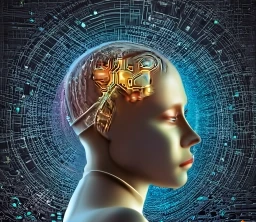In an era dominated by visual media, the analysis of images and videos has emerged as a cornerstone of research across various domains. From medicine to environmental science, from sociology to artificial intelligence, the ability to dissect and understand visual data has paved the way for groundbreaking discoveries and transformative insights. As technological advancements continue to accelerate, so too does the sophistication of image and video analysis techniques, offering researchers unprecedented opportunities to explore, interpret, and innovate.
Unraveling Complexity in Medicine
In the realm of medicine, image and video analysis have revolutionized diagnostics, treatment, and research methodologies. Medical imaging modalities such as MRI, CT scans, and ultrasound provide clinicians with invaluable insights into the human body’s intricate structures and functions. However, the sheer volume and complexity of medical imaging data present significant challenges in interpretation and analysis.
Cutting-edge algorithms powered by artificial intelligence (AI) have risen to meet these challenges, offering remarkable accuracy and efficiency in tasks such as tumor detection, organ segmentation, and disease classification. Deep learning models, in particular, have demonstrated exceptional performance in medical image analysis, often outperforming human experts in certain tasks.
Furthermore, the integration of image and video analysis with other data modalities, such as genomics and electronic health records, holds immense promise for personalized medicine and predictive analytics. By harnessing the synergies between different data types, researchers can unlock new avenues for understanding diseases, tailoring treatments, and improving patient outcomes.
Environmental Monitoring and Conservation
In environmental science, image and video analysis play a vital role in monitoring ecosystems, assessing biodiversity, and combating environmental degradation. Remote sensing technologies, including satellites, drones, and underwater cameras, capture vast amounts of visual data from diverse habitats around the globe.
Analyzing this data enables researchers to track changes in land use, detect deforestation, monitor wildlife populations, and assess the impact of climate change. Machine learning algorithms are employed to process and interpret satellite imagery, identifying patterns and anomalies that may escape the human eye.
Moreover, citizen science initiatives leverage the power of crowdsourcing to engage the public in environmental monitoring efforts. Mobile apps equipped with image recognition capabilities allow citizen scientists to contribute valuable data on wildlife sightings, invasive species, and environmental hazards, augmenting traditional research methods and expanding the scope of scientific inquiry.
Social Sciences and Human Behavior
In the social sciences, image and video analysis offer unique insights into human behavior, cultural trends, and societal dynamics. Researchers employ techniques such as facial recognition, gesture analysis, and sentiment analysis to decode nonverbal cues and extract meaningful information from visual content.
For example, computer vision algorithms can analyze crowd behavior in public spaces, detect patterns of movement and interaction, and inform urban planning and design. In psychology and sociology, video recordings of social interactions provide rich data for studying group dynamics, communication patterns, and social hierarchies.
Furthermore, the proliferation of social media platforms has generated vast repositories of user-generated content, including images and videos that offer glimpses into people’s lives, interests, and relationships. Analyzing this data allows researchers to explore cultural phenomena, track trends, and understand the impact of digital technologies on human behavior and social interactions.
Future Directions and Ethical Considerations
As image and video analysis continue to evolve, several emerging trends promise to shape the future of research in this field. Advancements in deep learning, including self-supervised learning and transformer architectures, hold the potential to further improve the accuracy and efficiency of visual data analysis.
Furthermore, interdisciplinary collaborations between computer scientists, domain experts, and ethicists are essential to address the ethical implications of image and video analysis. Concerns related to privacy, bias, and algorithmic fairness must be carefully considered to ensure that these technologies are deployed responsibly and equitably.
In conclusion, image and video analysis have become indispensable tools for research across a wide range of disciplines, driving innovation, discovery, and societal impact. By harnessing the power of visual data and cutting-edge technologies, researchers can unlock new frontiers of knowledge and address pressing challenges facing our world today.









